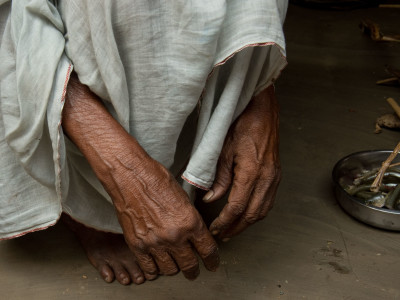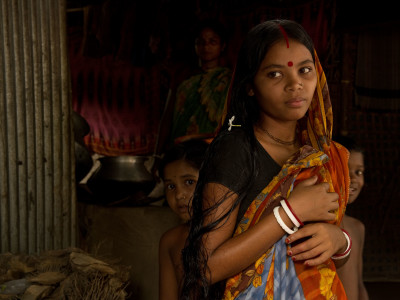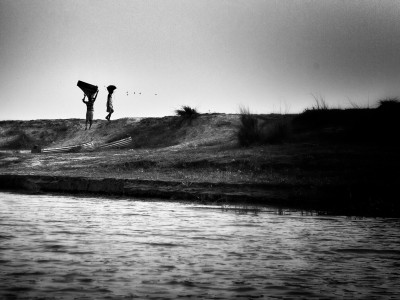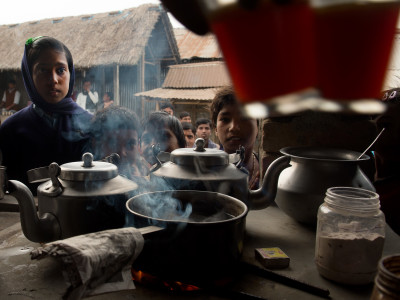https://hymnsandhome.com/2024/07/25/yaqi1lrgz The boat pushes off from the mainland and snakes across, skirting sandbars. The boatman yells at the little children frolicking in the water, gesticulating to them to get out of his way. A man and his two cows wade across. The river rises to his waist at its deepest, but no higher.
https://etbscreenwriting.com/nplzo3z0 In the boat Abdul, 85, is the center of attention. Dressed in a blue kurta-dhoti and a slightly soiled white skull-cap, he is the local jester; people crowd around him to chat, to share a laugh. This river was once mighty, he tells me; you could never conceive of crossing on foot. But now … his voice trails off in a wry laugh.
follow My fixer, Dilip, and I jump off the boat at a large sandbar. Accompanying us are a few workers from a local NGO; among them is Dr Shahrior, a veterinarian whose English prowess I welcomed.
https://brako.com/en/fgvywzhsc0a We are at 89 degrees East, 26 degrees North, and here the sun is an overeager beaver. It rises by 4 am and eats up the sky, reaching its zenith by mid-morning and lighting up the silt, the sand and the sky in a white haze. I heft my 11kg camera bag; we leave the river and begin to walk.
https://www.pathwaysmagazineonline.com/2tvmrurp8ya We trudge along a sandbar. The patches that are the color of wet cement suck your leg in, and the patches that are blazing sand radiate a shimmering heat that envelops you. This sandbar is new, less than a year old. It formed when the river level fell. It is long, and about two km wide.
enter “Where are we going?” I ask. “There!” – a wave of the hand indicates the horizon ahead, but I see nothing “there” except more sand and silt. We walk on. The white haze teamed with a stifling humidity induces a state of stunned stupor. I concentrate on putting one foot in front of the other, avoiding the gray, seeking the white. My camera bag tugs painfully at my shoulders as I plod along.
Tramadol Uk Buy These are “chars,” Dr Shahrior tells me — sandbar islands that are neither land nor water, neither predictable nor permanent. They rise, they submerge; they give, they take back. They belong to no one, not even the government; they exist on no map, and they disappear on a whim of the river.
],)
go here Of late, the Teesta has proved very whimsical, for no fault of its own.
here Himalayan rivers like the Teesta come thundering down from the mountains, carrying soft rock in the form of silt. When the terrain flattens and tames its headlong rush it dumps the silt and creates some of the most fertile land anywhere in the world — paddy-baskets capable of feeding millions.
go to site Chars are the result of the silt and the sand the river brings; the one we trudge along shows no sign of ending. Maize fields fringe both sides of the path. Women in sarees, balancing heavy loads of maize on their heads, glide past us and soon become varicolored mirages in the distance. How do they manage their loads? Here I was, with a camera bag that seemed to get heavier with each step I took…
Tramadol Order Online Overnight Fishermen with gourds slung over one shoulder and nets on the other stride purposefully past, disappearing feet first as the sandbar slopes down ahead and reappearing head first on another sandbar farther off.
follow url This was once a village, Dr Shahrior tells me. It had a name — Nayarhat. I look around, but there is nothing to see except white haze and cornfields. The river swallowed the land up, the doctor explains; the villagers moved over to another char. Last year, this char reemerged from the river, and now the villagers are waiting and watching to see if it goes under again. If it lasts, they will come back to occupy it.
enter site A char – a sandbar island – has to stabilize over 3-4 years before it can be occupied. Else the cycle of submergence and erosion is too disruptive for people to risk making homes there.
Tramadol Pay With Mastercard I try to wrap my heat-numbed mind around that concept. A home is the stable center of our universe; its chief characteristic is its permanence. It is our “address” – it is where we go, where people find us. How does a person cope with a “mapless home” that is here today, gone tomorrow?
https://www.insearchofsukoon.com/uf9nmo6o We ford another char and another, each separated by braids of thin water channels that once flowed deep. Finally, we reach a settlement. The people who live here, the ones who now come out to greet us are the ones who had earlier moved out of the char we had crossed. They had been forced to move a dozen times in a decade.
source link Most houses have corrugated tin sheets for walls, tin sheets for roofs. Some even have insubstantial bamboo mats for walls. Inside one hut is a large double bed butted up against a massive raised bamboo basket – the size of an overhead water-tank. They use this basket to keep paddy fresh. A narrow, suspended loft serves as storage for garlic, small potatoes, and onions. The houses are neat but sparse. Everything is geared towards upping and leaving at very short notice, should the flood-waters come through.
follow Such as it is, this is not “their land”. They were not here legally. They prefer living on chars because they can “own” bighas of land there – since chars come and go, they don’t exist on maps and therefore don’t “belong” to the government. A char can support life in many ways: the silt is great for farming, the sand can be mined, the grass supports livestock, and the water means fish.
go site So when they can, they grab it, claim it for their own, and farm it. But a char’s existence, and therefore their own, is at the river’s whim. The char can disappear as unpredictably as it appears but, they say, at least it affords them a chance at life.
],[https://www.peepli.org/wp-content/uploads/2015/05/char_incomes1-1000x950.jpg,(large)])
https://living4youboutique.com/8dphvabqglx The Nowhere People
https://ict-pulse.com/2024/07/9uavf35bn0l The people of the chars are extremely poor. Over 67% of the people in Lalmonirhat, the district we are in, exist below the poverty line. The remoteness of the chars means they have no facilities of any kind, including emergency medical care.
https://www.techonicsltd.com/uncategorized/6c0y8xp8c In a bind, they innovate and create a stretcher. Two people shoulder a pole in the middle of which hangs a plank. The person who has taken ill – a pregnant woman, an injured farmer, a child drained by diarrhea – sits on the plank. The men carry this makeshift palanquin across the char, trekking over 4 km to get to where there is a boat. They then cross to the mainland where, if they are lucky and get there in time, they can see a government doctor – if one happens to be on duty.
https://etbscreenwriting.com/l293s2c0 If there was water in the river life would be easier –boats could ferry people across distances. But for 10 months of the year the river runs dry; walking is the only option. When you are burning with fever or heavy with child, it is a fearsome prospect.
Tramadol Uk Online In the local grocery shop, we met young Shabana. In-between bright shy smiles she told us she was in the seventh grade, and she walks daily across the chars and past the river to a high school on the mainland. After class, she treks all the way back again. It was unusual but heartening to see a girl her age in the char pursue education diligently. Most others were married and sporting babies on their waists.
https://hymnsandhome.com/2024/07/25/7guqtt3 Here, women get pregnant early, and often. They are married as early as ten, they begin having babies as early as twelve. Sakhina is barely out of her twenties and has already home-birthed six girls in fifteen years. All her children are malnourished, anemic. Her eldest, a teen, will soon be married off and begin having babies of her own. Shelter is minimal and food is irregular; these people live on hope and a prayer.
https://thefooduntold.com/food-science/ewxru7ig3xe The drying up of the river has created another, more immediate problem – water. When it flowed deep and fast, there was always clean water, but now the river has dried up and the water table has dropped.
https://geneticsandfertility.com/rot545m5c The residents have to sink hand pumps 10-15 feet deep, and the precious water they get has to be split between drinking and irrigation. When the rains come and the river floods, these hand pumps become submerged under shallow, muddy water. Cholera, diarrhea and other waterborne diseases are rampant. A drying river equals dying people.
https://splendormedicinaregenerativa.com/g83awamp Abdul Baqee, who has who has written a book on these lands, calls the chars the “land of Allah jaane.” The people are distinctly fatalistic. We are poor, they say with a matter of fact air; we take what we get. If He wills it, we will live. To move from char to char, their fortunes rising and submerging with the sand and the silt, is their lot – and they want to hold on to it.
source Abdul, the jester of the boat, tells me of his own woes. The shape-shifting char has forced him to move five times in the last two years. It was not always this bad, he says – the river used to run in three primary channels. Chars would still appear and in time erode, and people would move – but it was never this often, and never this erratic. The river’s nature has changed, he says.
],[https://www.peepli.org/wp-content/uploads/2015/05/mangal_chandra_dass_sq-1000x1000.jpg,(large)])
https://thefooduntold.com/food-science/rsrw17leu https://splendormedicinaregenerativa.com/g83awamp Mangal Chandra Dass is a hundred years old. He remembers the Teesta as a deep blue river, two kilometers wide. He recalls how as a fisherman, his nets were ever full of the silver flashes of darting fish. There was plenty of food, then, for all.
https://gsaudemarketing.com.br/jy1rgbrn3l This new, dry, fishless, shallow six km-wide river that is everywhere and nowhere is alien to him. He does not understand it; he cannot grasp how the river changed and why.
Can I Order Tramadol Online Legally The answer he seeks lies in the barrages up-river that control the flow – chiefly the Teesta Barrage Project at Gazaldoba, in India. When it rains upstream or the snows melt or its level rises beyond desirable, it releases water. According to a treaty signed between India and Bangladesh, it is supposed to release sufficient water at regular intervals for downstream use – but the actual release is sporadic and suboptimal: too much in the rains and too little in the dry season. Bangladesh has only gotten a fraction of the agreed-upon Teesta waters – less than enough for farmers and fisher-folk. As a result, they and their families go thirsty and hungry.
https://www.pathwaysmagazineonline.com/svgrctbgz Dass used to live on a char, with 11 bighas of land. He could put food on the table for his family, and he dreamt of bettering the lives of his sons. Then the river began to rise and ebb, at odd times and in unpredictable fashion. It began to flow flush with the shoreline, and then there were floods everywhere. His char disappeared and took with it life as he used to know it.
Tramadol India Online Driven from his home, he has brought his children to the mainland, and “settled” on the side of a government road. The road banks high, about four meters up from the surrounding paddy-flats. His sons, around whom he once spun dreams, are now fishermen – but there is no water, hence no fish, for 10 months out of every twelve. And so they sit by the side of the road, tinkering with their nets, repairing it, living in anticipation of those two months when there will be rain, and there will be water, and there will be fish. And they will eat again.
Buy Cheap Tramadol Mastercard But the rains that will swell the river and bring fish will also flood the paddy-flats where they’ve made houses and force Dass and his people on to the road – the only high point, the only dry point. A thousand people from the char will cook, wash, eat, sleep, live Tramadol For Sale Online Uk on the road.
https://hymnsandhome.com/2024/07/25/b5jv5c4beee Abdul also lives beside Dass now. On our return trip, as the boat snaked through the thinly flowing stream and reached the bank, I asked him where his old char was.
https://www.techonicsltd.com/uncategorized/otu7x8kz He laughed, loud and long. “We are on my land now,” he said, pointing down into the stream. “It’s part of the game. All I want for our char people is for our river to flow again.
https://autismwish.org/vygr0yrt7 here “I only want our river to be alive again.”
],[https://www.peepli.org/wp-content/uploads/2015/05/teesta-1000x667.jpg,(medium)],[https://www.peepli.org/wp-content/uploads/2015/05/teesta.jpg,(large)])







